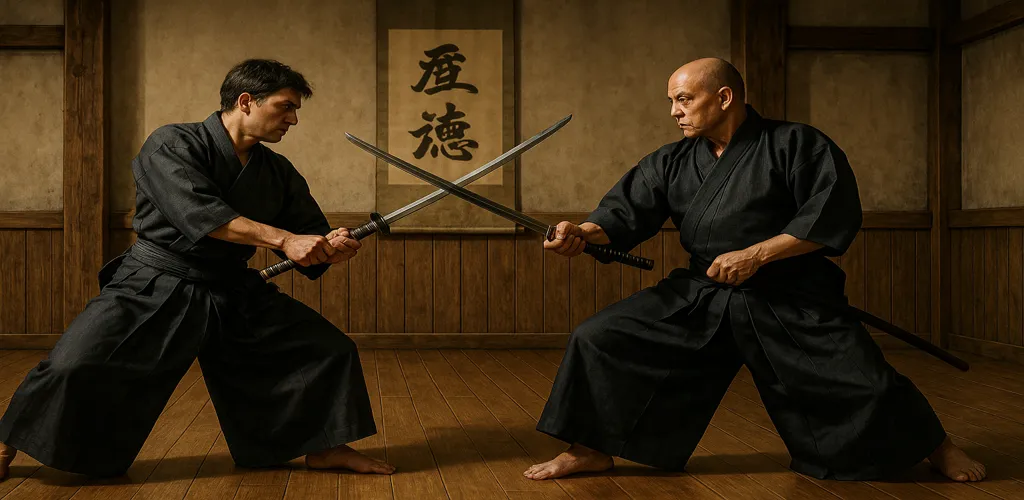Koryu Kenjutsu

Koryū Kenjutsu refers to the classical sword schools of Japan that originated before the Meiji Restoration (1868). These ancient systems were developed for battlefield combat by samurai and are preserved today through strict transmission within specific lineages (ryūha). Each school maintains its own unique techniques, philosophy, and tactical strategies, often encompassing both solo kata and paired combat drills. Koryū Kenjutsu is not sport or performance—it is a living martial heritage emphasizing precision, timing, and the mindset of survival.
Koryu Kenjutsu Essentials
About Koryu Kenjutsu
Explore the essence of Koryū Kenjutsu—classical samurai swordsmanship focused on real combat, preserved through ancient traditions and school-specific systems.
Koryu Kenjutsu History
Trace the origins of Koryū Kenjutsu to Japan’s warring states period. Learn how different schools emerged, adapted, and survived through centuries of change and reform.
Philosophy & Approach
Koryū Kenjutsu emphasizes katsujinken (the life-giving sword), preemptive action, and situational awareness. Understand how battlefield values shape its purpose and pedagogy.
Techniques & Style
Each ryūha has distinct stances, angles, and cutting methods. This section breaks down the technical variety—from Itto Ryu’s power strikes to Kashima Shinto Ryu’s fluidity.
Traditions & Etiquette
Formal rituals, teacher-student hierarchy, and school-specific customs are central. Learn how ancient etiquette preserves discipline and transmits martial values.
Uniform & Symbols
Practitioners wear traditional keikogi and hakama, often marked with school crests (mon). This section details how clothing reflects lineage and historical identity.
Weapons
Koryū Kenjutsu uses wooden swords (bokutō, fukuro shinai) and occasionally live blades for kata. Learn how weapon use varies by school and training method.
Ranking System
Most koryū use the menkyo licensing system, not modern dan ranks. Understand how authority is earned through years of training and ceremonial recognition.
Koryu Kenjutsu Glossary
Learn historical terms like tachikata, uchi-dachi, and mokuroku. This glossary supports understanding of school-specific terminology and classical concepts.
Notable Figures
Meet historical swordsmen such as Kamiizumi Nobutsuna or Yagyu Munenori, who shaped early kenjutsu traditions and mentored feudal lords and warriors.
Branches & Organizations
Explore the major surviving ryūha, such as Katori Shintō Ryū, Kashima Shinryū, and Hyoho Niten Ichi-ryū. Learn how they’re organized and transmitted today.
Competitive Format
Koryū Kenjutsu does not include sport competition. This section explains how practitioners focus on kata, transmission, and internal development instead of matches.

